The Brave Men and Women Protecting Wildlife on the Front Line | Anti-Poaching in View
We are often asked how we protect our herd of elephants from poaching in our reserve. We need to protect not only our herd but also the wild elephants and other wildlife we share our home with. HERD is situated in the Kapama Private Game Reserve in the Greater Kruger Area, and we are guarded by a dedicated anti-poaching unit that works with the police, the CIS in the Kruger National Park, and several other anti-poaching units.
The Kapama APU patrols the high-risk areas of the reserve, conducting daily foot patrols to look for traps and poachers. It also regularly conducts occupational safety inspections. Our APU has been using tracking dogs as part of its anti-poaching initiative to combat poaching. The canine unit includes Bloodhounds and Belgian Malinois dog breeds, which have been trained to track potential poachers.
You can donate a backpack to a ranger, to assist them with their selfless and dedicated duty in the bush, as they ensure poachers do not take the lives of the animals we are working to protect. Donate through our wishlist for the APU.
Anti-Poaching Past, Present, and Future
It is important to look at the background that has led to the great need for anti-poaching teams to become operational in all conservation areas. There has been poaching in Africa since antiquity – people hunted in areas claimed by other states or reserved for royalty, or they killed protected animals. Some of the European big game hunters who came to Africa in the 1800s were found guilty of poaching, and some were tried and found guilty by the African kings on whose land they had hunted without permission.
Poaching is the illegal taking of wild animals, fish, and plants. It dates back to the Middle Ages, when laws were passed to prohibit the act. After independence in the 1950s and 60s, most African countries retained the game laws, but poaching for food—“bush meat”—continued, as did poaching for commercial gain.
Those who hunt for food present a threat to the animal population, but not on the same level as those who do so for international markets. In the 1970s and 1980s, poaching in Africa reached crisis levels. The continent’s elephant and rhino populations, in particular, faced potential extinction.
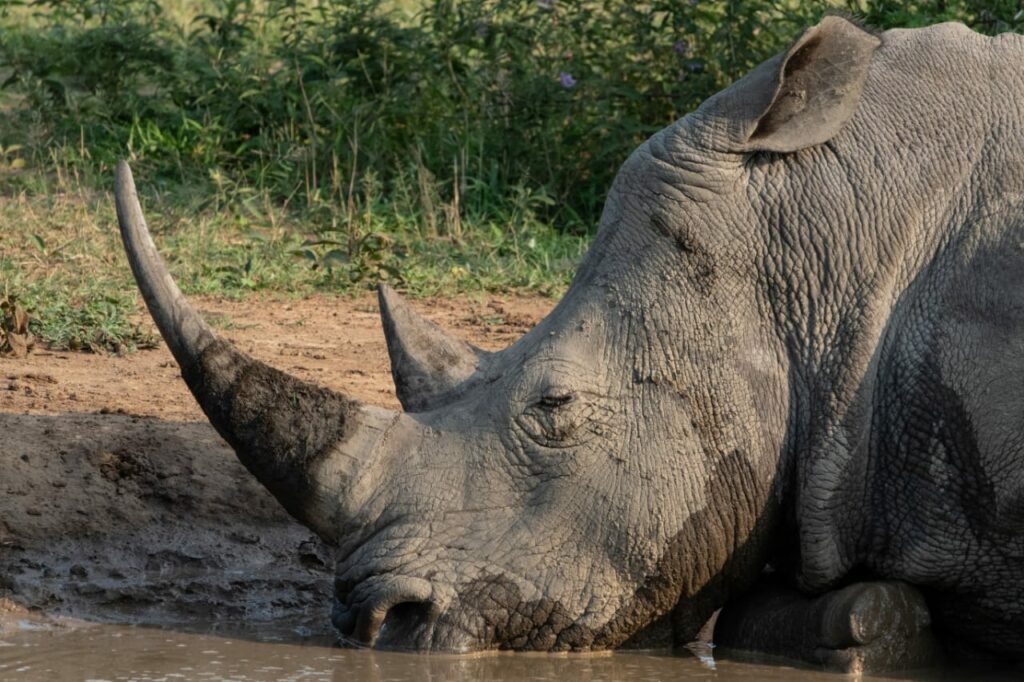
A group from the organisation, Reclaimed Earth recently visited us at HERD as part of a new volunteer programme, and were treated to a talk by the Head of our APU, Clive van Rooyen. Clive has an extensive background in security, nature conservation, and anti-poaching – he is also the head of our anti-poaching for the whole of Kapama Private Game Reserve.
Anti-poaching patrols have a long tradition in protected areas. Rangers usually fulfil duties related to conservation. For example, in South Africa Kruger National Park, 90 percent of a ranger’s duties used to relate to conservation, with the other 10 percent related to law enforcement. With the onset of the rhino poaching crisis in the late 2000s, rangers started dedicating 90 percent of their efforts to anti-poaching-related duties while conservation took up less of their time.
Intelligence-led policing is designed as a collaborative mechanism for information sharing within law enforcement and between community members. It relies on a significant analytical component and focuses on threats. Intelligence-led policing has been suggested as a useful strategy for targeting wildlife crimes. Additionally, some rangers will use personal informants. This helps when community members plan to engage in poaching by having someone in that community who works with the rangers. There are, however, significant barriers that can prevent local peoples’ cooperation with rangers, for instance – fear of retaliation by poachers, including physical harm or property damage. Financial incentives or lack thereof has been indicated as another barrier for community members to supply information; former poachers may also be used as informants for the authorities. There have also been efforts to rehabilitate former poachers as rangers.
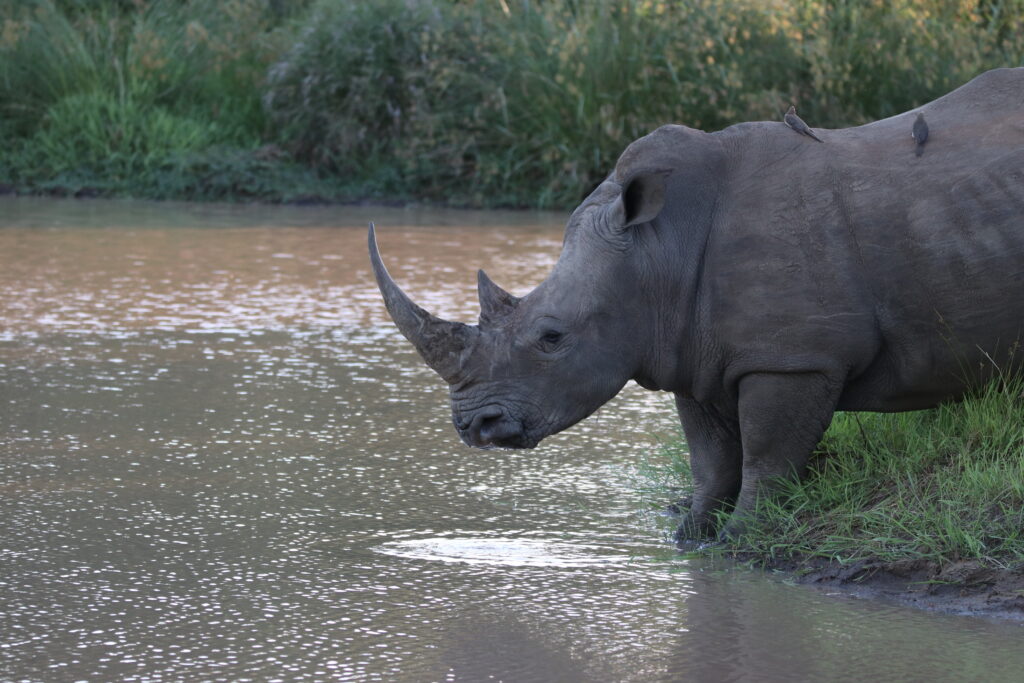
There are three different types of poaching.
Subsistence Poaching – This is carried out by a person who usually hunts/traps for himself and his family. He will often live in the surrounding areas of his poaching position and will know the terrain, habitat, infrastructure, routines and resident species remarkably well having most often grown up in and around the immediate wilderness area. The individual is often driven by poverty at first but can quickly cross over to becoming a commercial poacher. He will use whatever he has available to achieve his goal of “food”.
In a large reserve, this person often lives on the reserve without anyone knowing his presence. He will generally have the ability to live off the land. He will often know the reserve equally or better than the reserve management team and will certainly know that you are there before you know he is there. He is usually armed with his poaching weapons, as well as a knife or machete/panga and axe. He may also pose a threat to any lodges, homesteads or labourer compounds in the form of petty theft. He will almost always avoid any form of confrontation and will attempt to hide from or flee from the anti-poaching units. He most often operates alone or in a pair. He will generally give up once caught. He may hunt indiscriminately and will eat whatever is caught. The threat level to an anti-poaching unit will be a low 1 – 2.5.
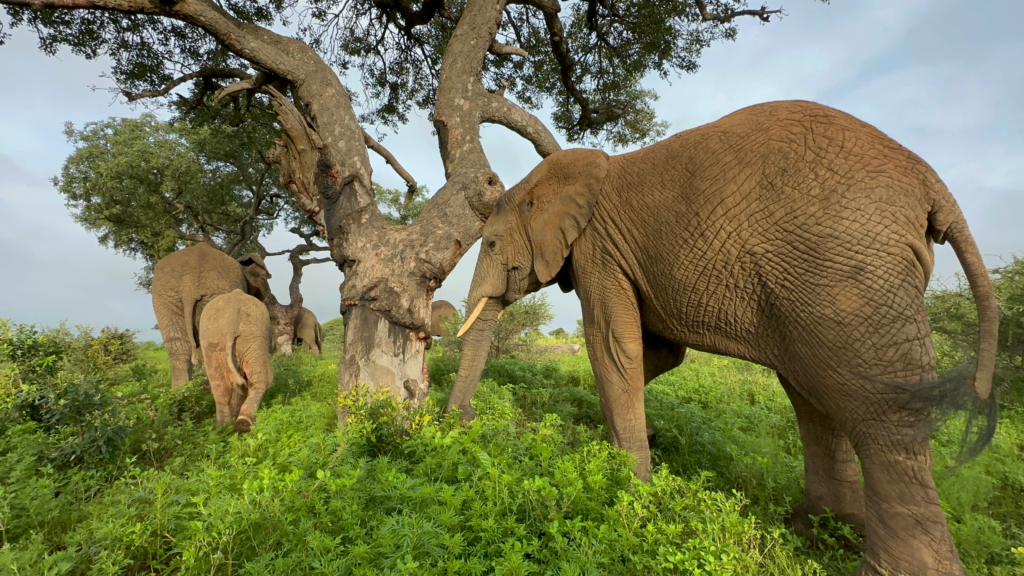
Commercial Poaching – Poaching for bushmeat, traditional medicine, and narcotic sales. This person cannot be easily profiled. He may be the farm manager next door or the subsistence-level poacher who has “upped his need” or has been requested to obtain certain products. Traditional healers and those who supply them also fall into this category. Some are simply opportunists who move along fence lines looking for vulnerable subjects. Lastly, this category includes plant (cycads and others) collectors.
These poachers generally operate as a group and are frequently armed with firearms. They are driven by money or even “sport”. They often sell the meat to butchers or back-door street vendors. They may use poison to target certain species for traditional medicine trade. When poaching for meat, they will hunt indiscriminately. When poaching for traditional medicine (Muti-trade), they may target expensive wildlife and plants to fulfil specific requests. They are often opportunistic with poaching. Their meat sales can look legitimate and often come with proof of purchase. However, this can be very area-dependent, as some markets are highly informal. They can be equipped with firearms, telescopic sights, night vision spotlights, radio communications, and vehicles.
They will try to avoid confrontation and work on a “kill and get out” principle before anyone comes. They may consider fighting back if their numbers allow but will generally rather flee when confronted. They usually target various locations in and around their living environment. They may also work seasonally or at specific times of the month. They generally operate at night. Preferring full moon – Also referred to as “Poachers’ Moon”. They may remain in larger reserves, living there for several days while they obtain their required harvest; this is particularly prevalent during the winter months. This level of poacher may also kill for sport and leave the carcass where they shoot it. They certainly pose a significant threat to wildlife.

Syndicate Poaching – This is sophisticated organized crime, well-funded, well-networked, and internationally orchestrated. They recruit large networks of individuals, mostly locals, to do the actual poaching. Where syndicate-level poachers are encountered, it is at the lowest level of the syndicate. These poachers are highly organised, and resourced and operate within a sophisticated intelligence network. They always operate in groups, often very large groups of between 5 and 50 members.
A significant financial motive drives the upper echelons of the syndicate. The lower levels are also financially motivated but at a fraction of the level of their masters. Ironically, the higher the risk of the operation, the lower the operatives are paid. They are well equipped with light aircraft, helicopters, assault rifles, explosives, night vision optics, vehicles, (encrypted) radio communication, dart guns, and camouflage clothing. They utilize overt or covert surveillance followed by rapid “hit and run” tactics and do not linger after making their kills.
They will try to avoid confrontation but will not hesitate to exercise excessive force when confronted. They operate during the day and at night. They are target selective, with species including black & white rhinos, elephants, lions, and leopards. Marine species such as abalone are also included in this level. They have the resources to target large areas. The syndicates work as businesses. They are professionals, frequently with a military or Para-military background and training. Syndicate poachers have extensive skills, knowledge and motivation.
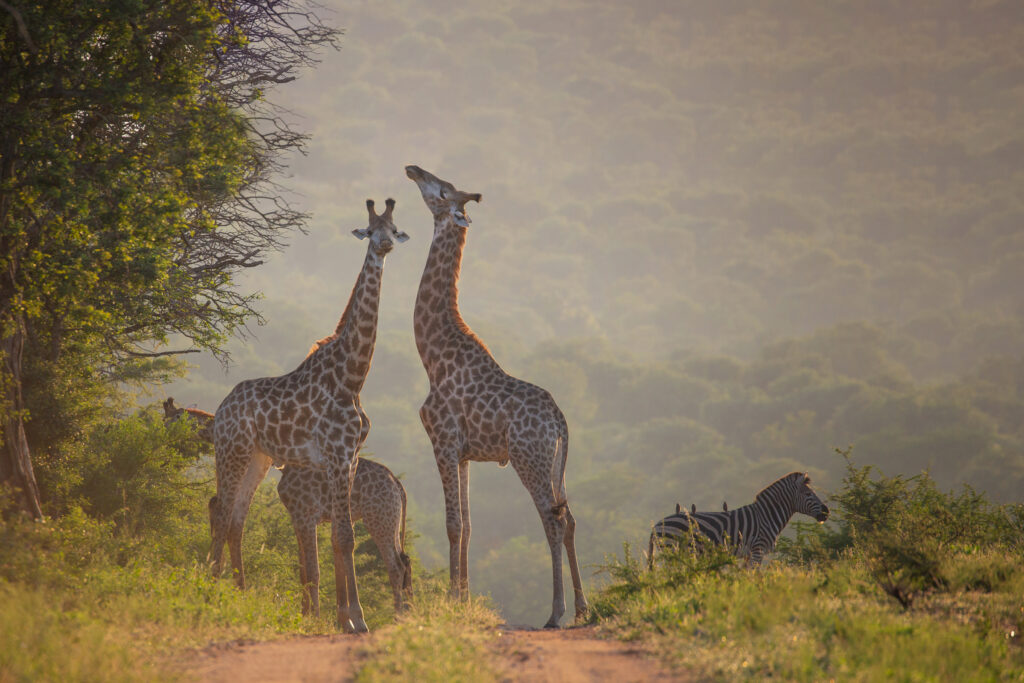
SPECIES OFTEN TARGETED
| SPECIES | SUBSISTENCE LEVEL | PRODUCT |
| Baboon Savana | 2 | Most commonly Muti trade and live sales |
| Buffalo | 1 & 2 | Meat and Live Sales |
| Birds of Prey | 2 | Muti trade and live sales |
| Burchells Zebra | 1 & 2 | Meat and Skins |
| Crocodile | 1,2 & 3 | Meat, Skin, eggs and live sales |
| Grey/common Duiker | 1 & 2 | Meat |
| Eland | 1 & 2 | Meat |
| Elephant | 2 & 3 | Ivory |
| General Birds | 2 | Muti trade and live Sales |
| Giraffe | 1 & 2 | Meat |
| Hippo | 1, 2 & 3 | Meat, Skin and Ivory |
| Hyaena | 1,2 & 3 | Muti Trade |
| Impala | 1 & 2 | Meat |
| Jackal | 2 | Muti Trade |
| Kudu | 1 & 2 | Meat |
| Leopard | 2 & 3 | Skins and Muti Trade |
| Lion | 2 & 3 | Skin, bones, live sales and muti trade |
| Monkeys – Vervet | 2 | Muti Trade |
| Nyala | 1 & 2 | Meat |
| Ostrich | 1 & 2 | Meat |
| Pangolin | 1,2 & 3 | Meat, muti trade and scales |
| Plants | 2 | Muti Trade and live sales |
| White Rhino | 2 & 3 | Horn |
| Sable Antelope | 1 & 2 | Meat and live sales |
| Small Cats | 2 | Muti trade and live sales |
| Steenbok | 1 & 2 | Meat |
| Warthog | 1 & 2 | Meat |
| Waterbuck | 1 & 2 | Meat |
| Wildebeest Blue | 1 & 2 | Meat |
Not much is known about the brave women and men operating within Kapama Private Game Reserve. This anonymity is ensured to protect them and their families. We wish them continued success in their fight against poaching. We thank them for their incredible, selfless work and we thank Clive for sharing this very interesting information with us.
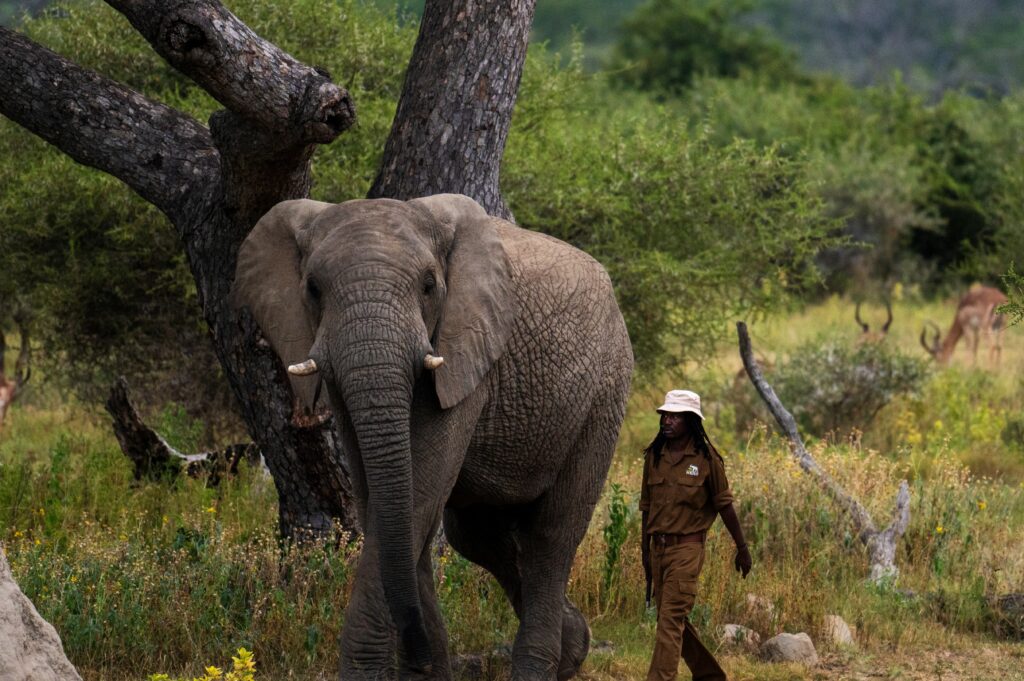
Seen here, one of our carers, George, looking after Mambo the elephant in our reserve.


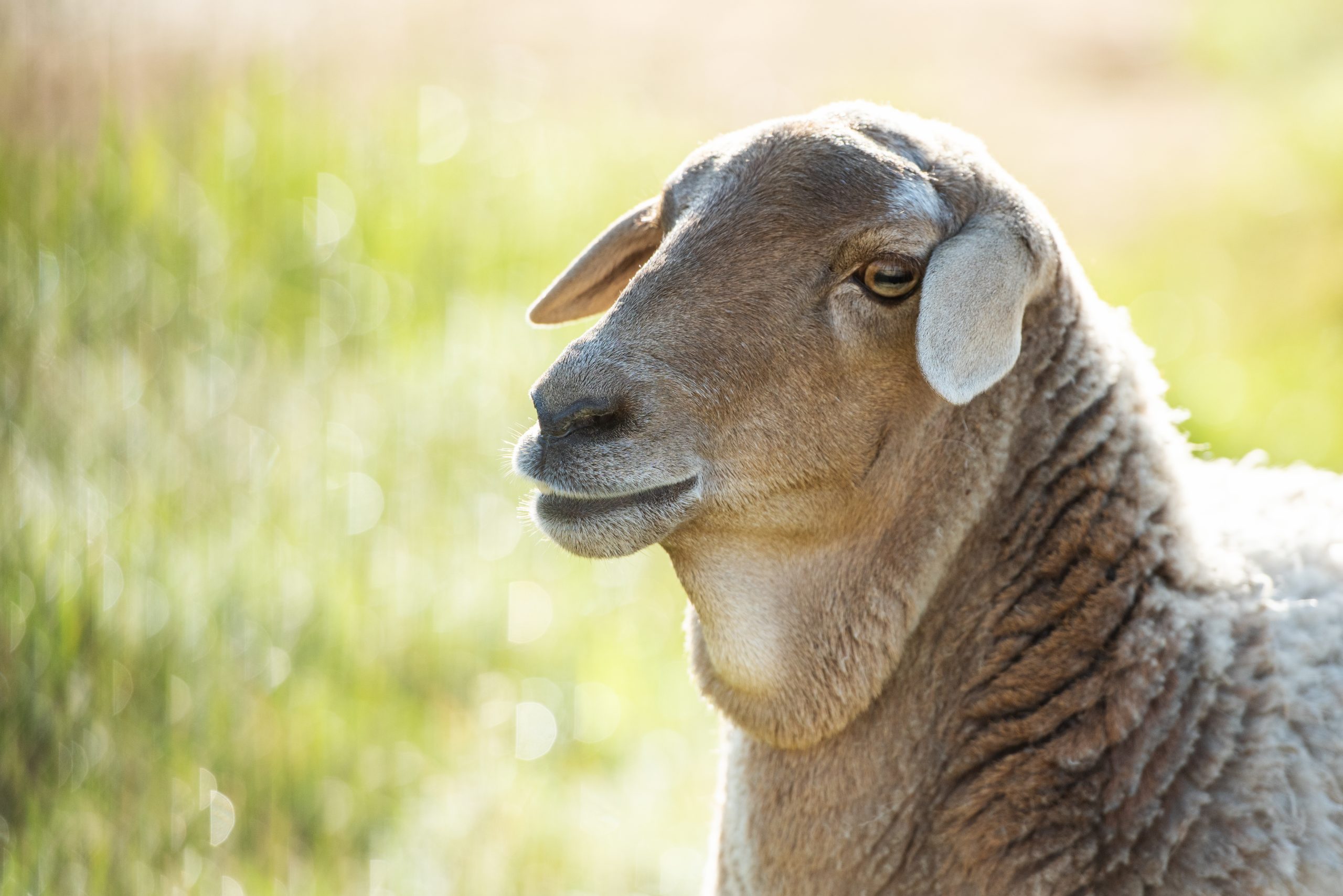
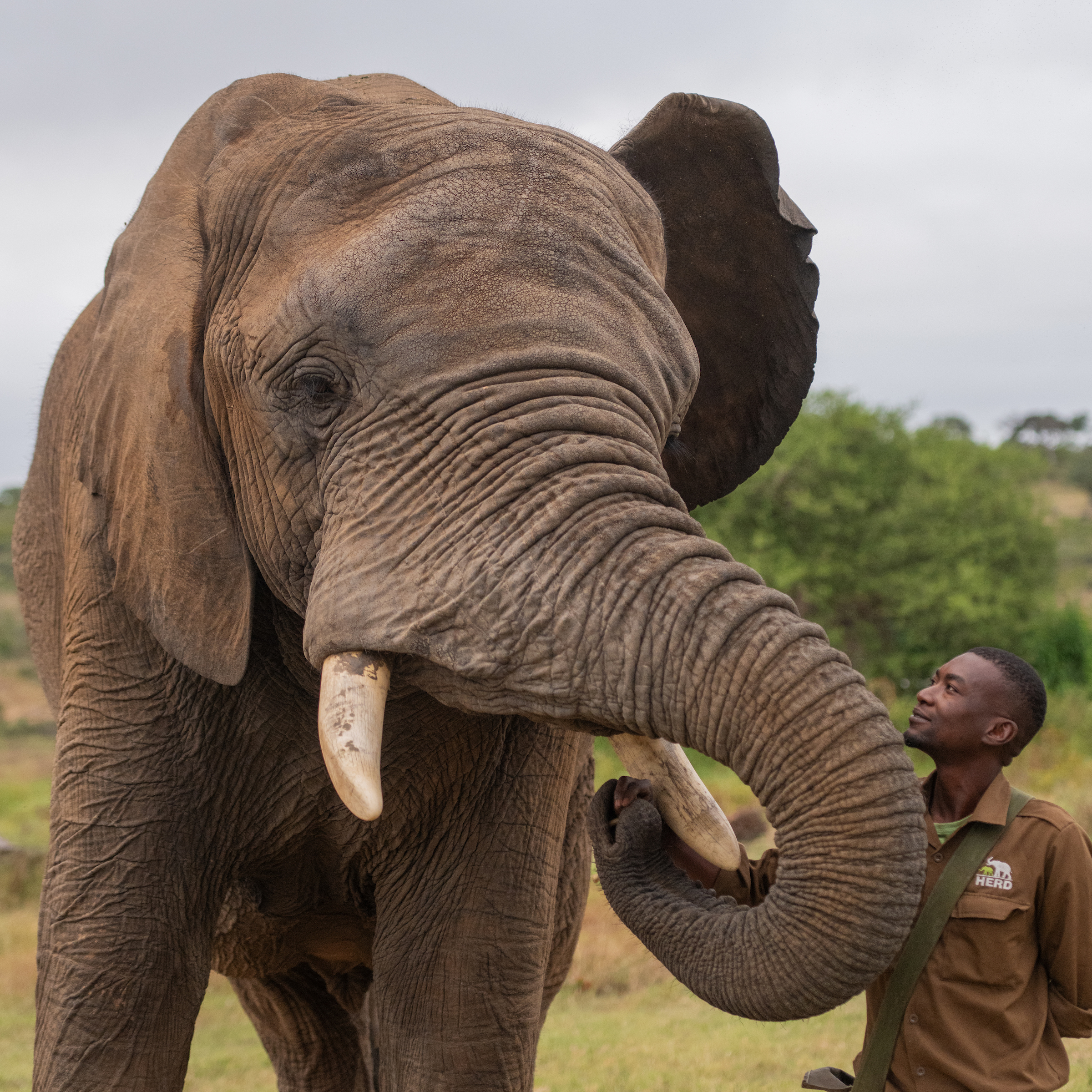

No comments yet.